We’ve talked about serendipity before on the road trip – how it’s created some great memories – and my day out in Dover, DE was no different.
I left Lewes with a plan – go to Dover to see the Capitol building, the old State House and then move on to Wilmington to visit the Delaware History Museum and Mitchell Center for African American Heritage. It all changed with a post on Facebook before I left the hotel about the red cups at Starbucks. I’m not usually one to bother with gathering more stuff, but I was weak that day and wanted a reusable “to-go” hot beverage cup. I found a Starbucks along the route and off I set.

John Dickinson Plantation
After grabbing my cocoa, I was driving along and started to see signs for the John Dickinson Plantation. I’d wanted to make it there another day but hadn’t made it. When I checked the GPS I was at the exit and the plantation was only 1/2 a mile away. It was serendipity! Had I not gone to Starbucks I’d have been on a different route and missed the plantation.
John Dickinson was a plantation owner who was also an enslaver. You can tour the house and grounds – I arrived right after a group of school children, but it worked out perfectly to get a lot of great information on the tour. I was probably one of the only people who would’ve been happy to hang with a bunch of 4th graders on their tour! One thing that stands out when you listen to the story of John Dickinson is the story of the manumission of his enslaved workers.
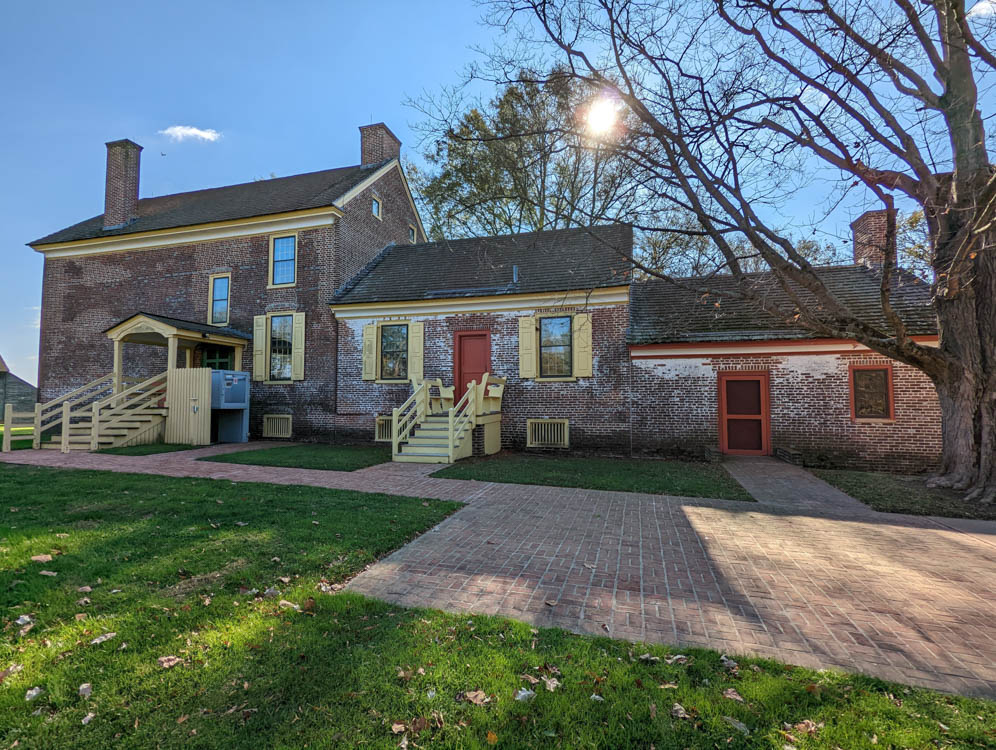
Note: Manumission is when the owner of enslaved people freed them without the government or laws saying they had to. Emancipation is the government making laws freeing enslaved people.
Back to John Dickinson. In 1777 and being a Quaker, he realized that he didn’t want to go to heaven and have it written on his record that he owned people. He started with a 21 year conditional manumission. There’s a reason for this though according to the National Park Service interpreters – in Delaware you had a pay a fee if you didn’t live somewhere, so by providing them with conditional manumission they had somewhere to live and didn’t have to pay that fee. As part of this he says, if you’ll stay with me I’ll provide a school master for your children and every head of household will get a trade.
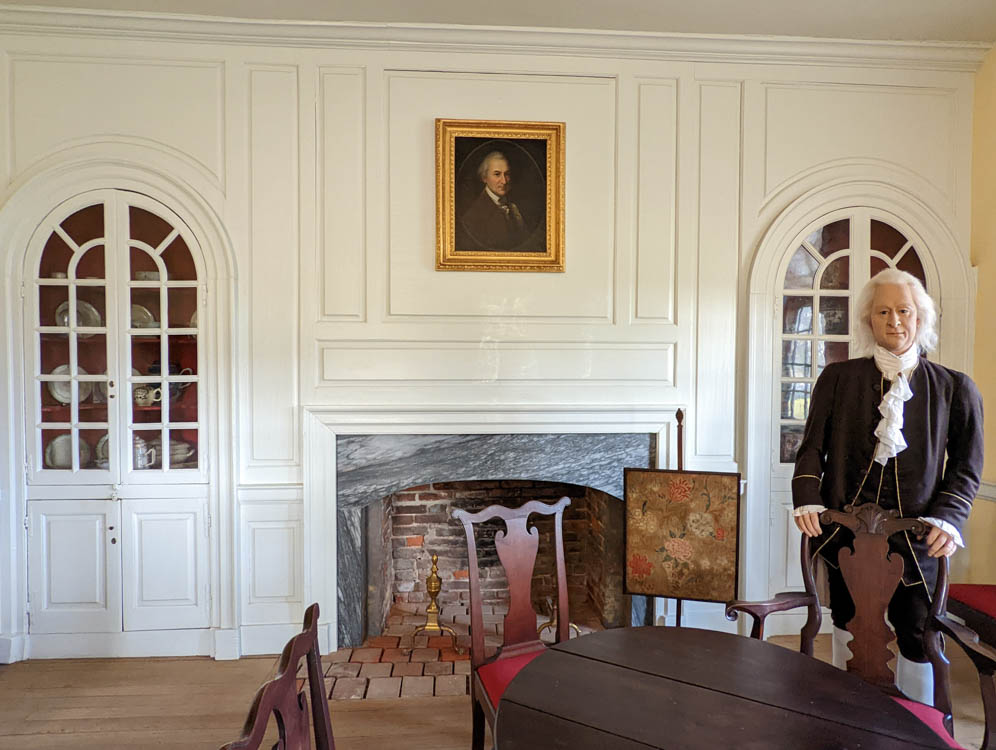
In 1786 the laws in Delaware change and he gives unconditional freedom to around 60 individuals. Many continue to live and work at the planation. One example is Nathan Phillips, an enslaved laborer, whose wife and 5 children live at another plantation nearby. When Nathan hears that his wife and 4 of his 5 children are going to be sold, he buys them all and they come to live at the Dickinson Plantation receiving first conditional and then total freedom. He and his wife stayed and paid $1 per year to live in the Peach Orchard Cottage.
I was really glad I was able to stop in to the John Dickinson Plantation. It wasn’t as grand as others we’ve visited like Mount Vernon, Monticello or Evergreen, but it provided another story to learn.
Legislative Hall
I headed onward to Dover, my plan was a little off track timewise but I thought I could still make it to all the things. I arrived in Dover, the capital of Delaware, to find that my day was quickly turning into a “choose your own adventure” story. If you do this, then you can’t do this – but if you choose this, you end up on this other path towards the ending…
I first stopped at the Old State House which was on my plan, only to find out they only run tours on the hour and take a break for lunch. If I wanted to see the Old State House I’d have to hang around and find something to do with myself. Or, I could abandon the capital and head on to Wilmington for the history museum. It was another 1.5 hours up to Wilmington. If I kept it tight at the tour though I might still be able to do both, I’d just get home later.
I decided on that plan. I called and said I’d be there for the tour after lunch and headed over to see the new capitol building, which as it turns out, isn’t a capitol building at all!
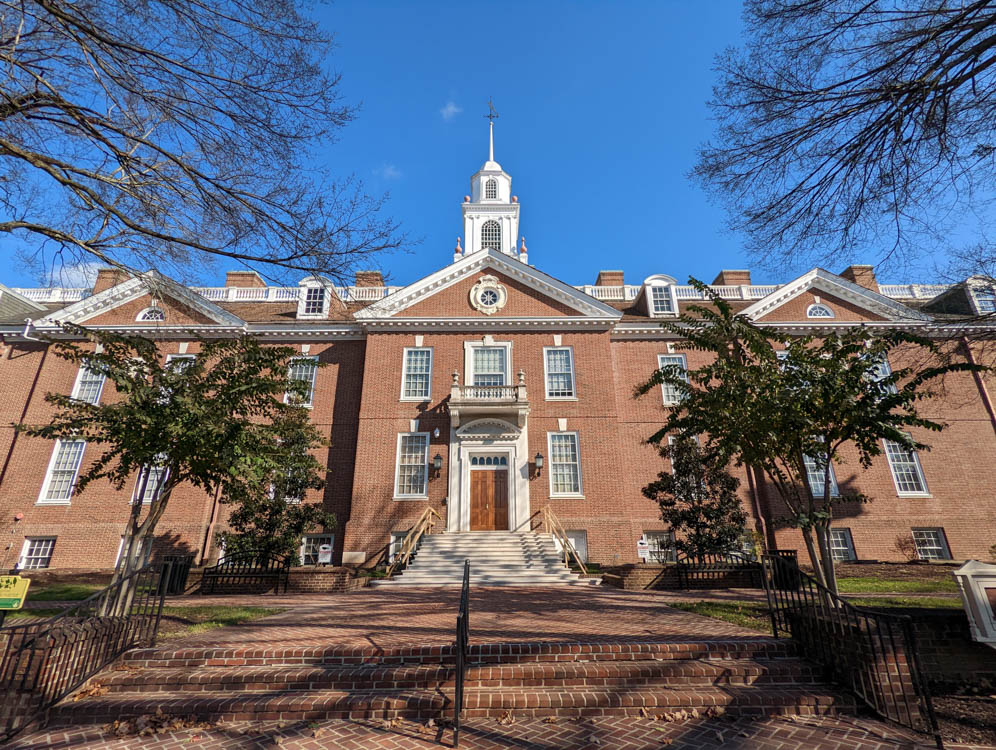
It’s called the Legislative Hall, not the capitol building or state house as most often are across the US. As I arrived to have a look around, it turned out there was a tour guide available and he gave me more information.
The paintings all around the walls in both halls of the legislature tell the story of Delaware. One of the most important people from Delaware’s history (and really that of the US) is Caesar Rodney who had a famous midnight ride. He rode all night to cast the deciding vote for Delaware which was needed to declare independence from Great Britain. Another fun fact that I learned from Steve, the guide, was that the majority party gets the window seats. In Delaware, that’s currently the Democratic Party.
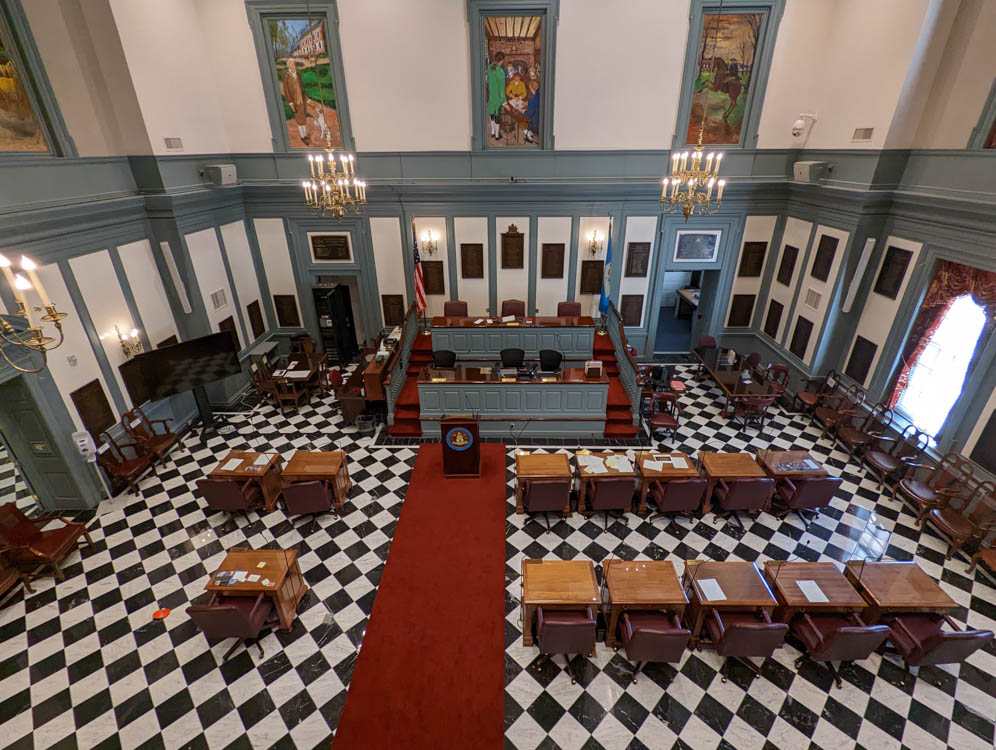
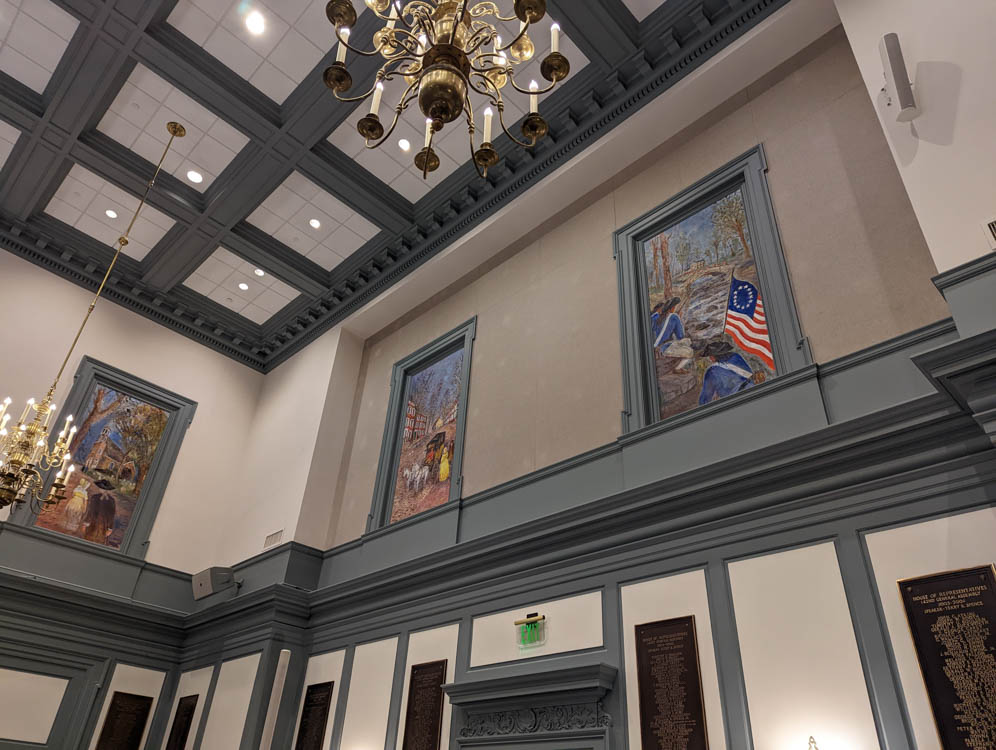
He mentioned the Golden Fleece Tavern as another key feature of Dover and US history… “Tell me more,” I said to Steve. At the time there wasn’t a building large enough to hold the whole legislature, so they met in the Golden Fleece Tavern for meetings and discussions. When the Constitutional Convention sent out copies of the newly drafted Constitution, it took the Delaware legislature only 5 days to agree to ratify it (you needed 3/4 of the colonies to ratify it to make it go ahead) and become the first state of the United States of America.
Old State House
My time with Steve was up and it was time to head over to the Old State House where Susan and Gavin gave me the tour and info there. The downstairs used to be a courthouse. One of the most interesting parts of that tour were the Tip Staves which were turned to face out to let the crowd in the courthouse and beyond know the verdict. When red faced the door they were found guilty, when white faced the door they were innocent. The legislative halls were upstairs and the Senate is home to a painting of George Washington painted in 1802 and he stands to his real height at 6’3″ in it. The frame is from the 1870s.
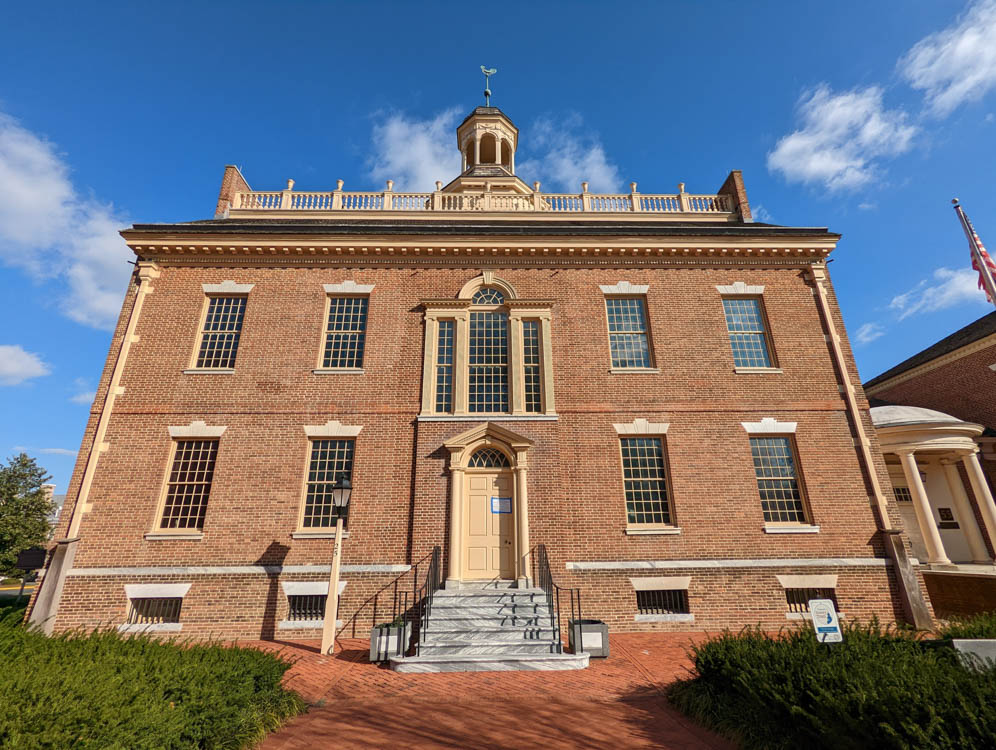
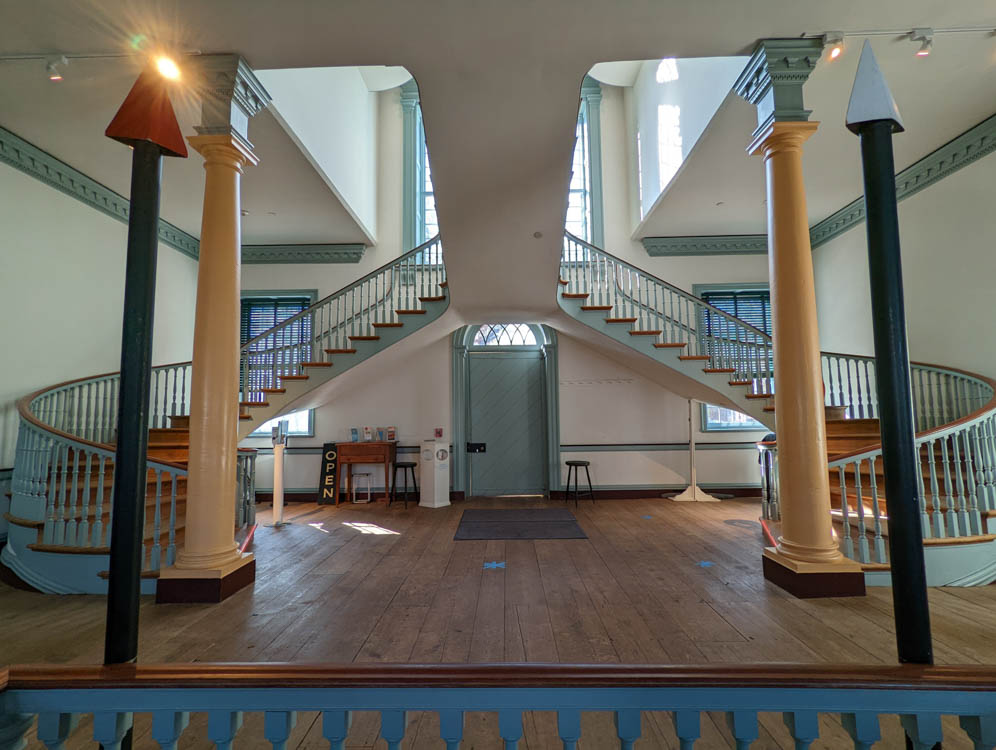
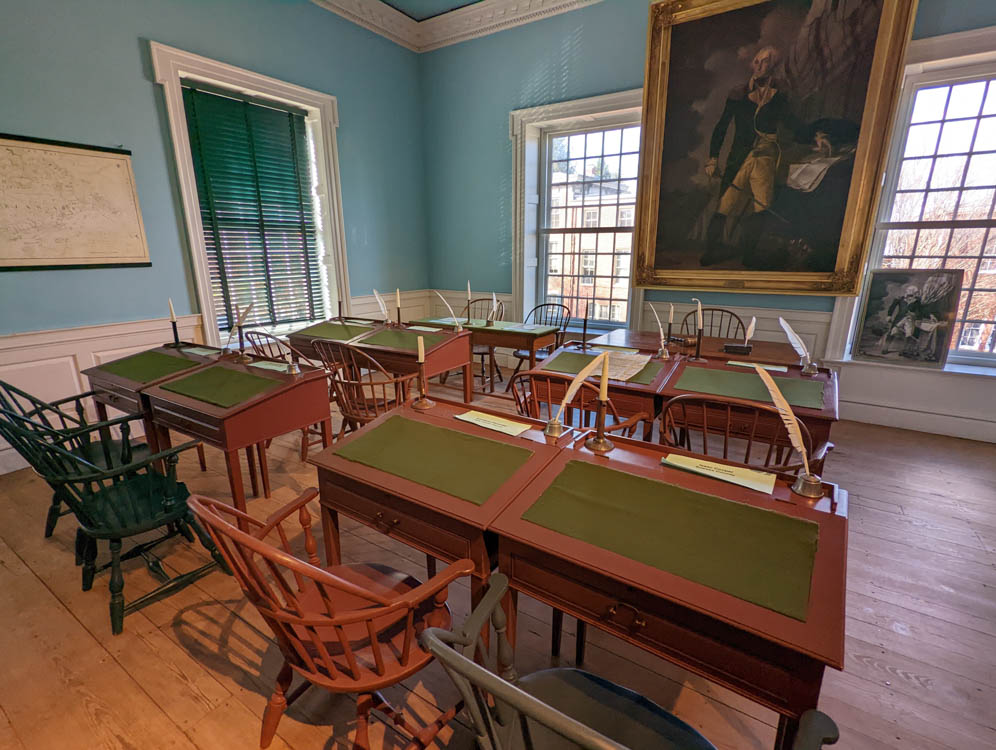
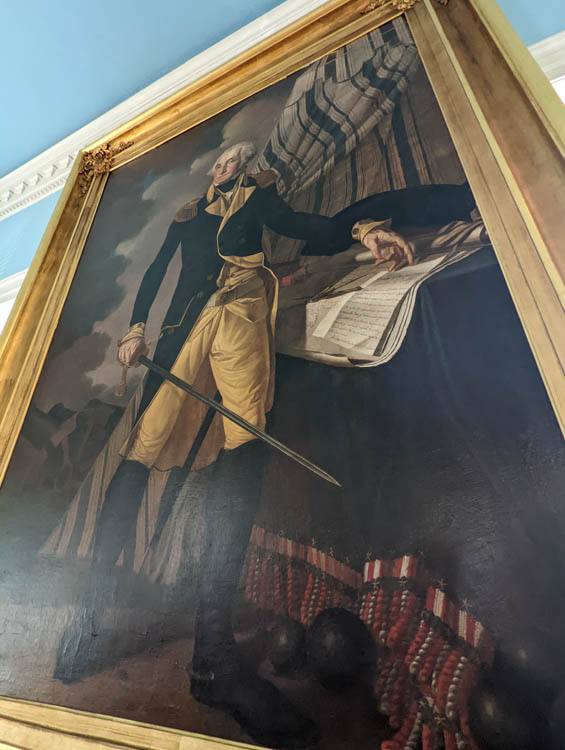
The Golden Fleece Tavern
I was told I really should pop over to the Golden Fleece Tavern to see the site where the Constitution was signed and, by the way, it’s a little art gallery and gift shop. So I popped in thinking I’d grab a little post card and hit the road to Wilmington. If I was quick at the history museum, and if I didn’t hit any traffic, I might at least see the African American exhibit I was hoping to see.
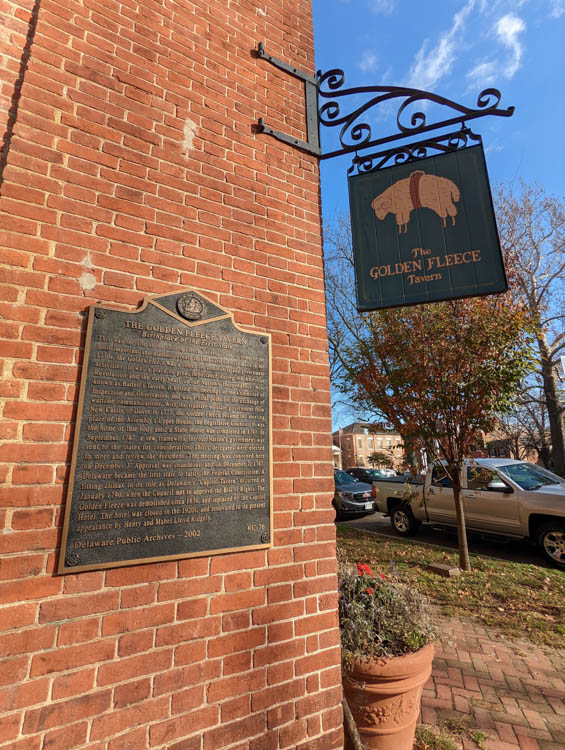
It turns out that The Golden Fleece Tavern is no longer there. It was demolished in 1830 and replaced by the Capitol Hotel, which was closed in 1920. The layout is still generally that of the old hotel, although it’s now filled to the brim with art, information and items for sale. It was still very cool to see the site though.
Johnson Victrola Museum
At this point, I checked my timing and it was going to be 2 hours to get to the history museum and if that stuck I’d still only have 1 hour there. I therefore decided to head home. However, as I wandered the Golden Fleece Tavern I was told about a wonderful little quirky museum that sounded like a can’t-miss spot to have a little look since it was just around the corner and was free – The Johnson Victrola Museum.
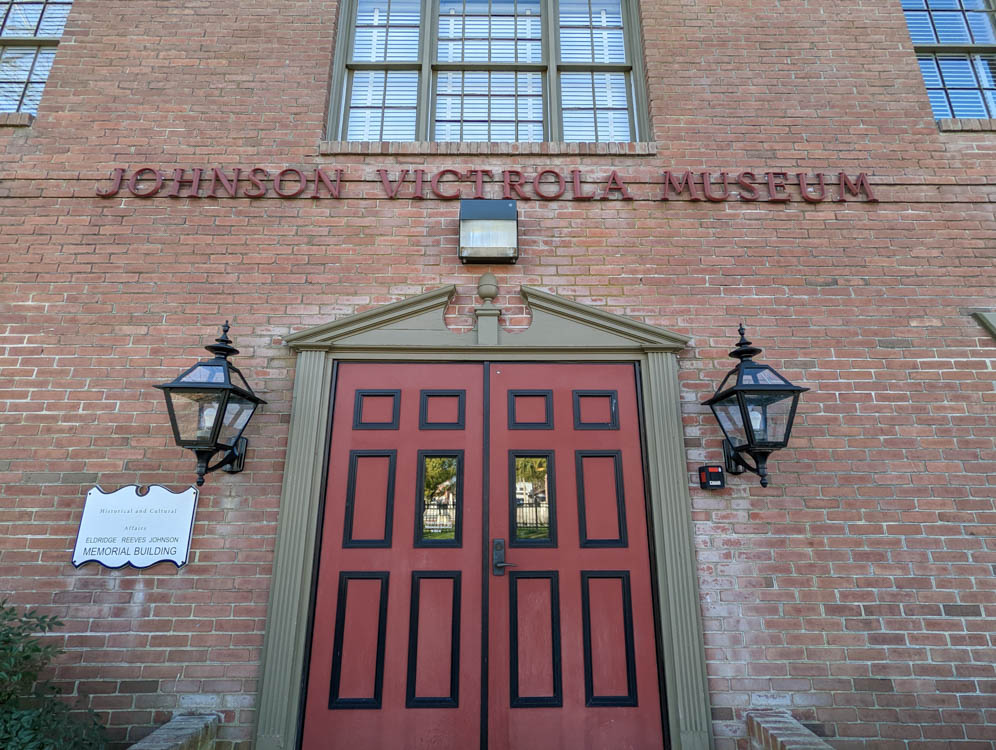
Never did I expect to spend almost 2 hours learning about the Victrola, but it turned out to be fascinating and my guide there also, Steve (but a different one from the Legislative Hall) shared so much great information with a passion that was captivating. It was hard not to ask questions and get wrapped up in the story, and a bit of drama, of the Victrola. I now probably know more about the Victrola than most other people than Steve and the other experts at the Johnson Victrola Museum, but I’m glad to have that distinction.
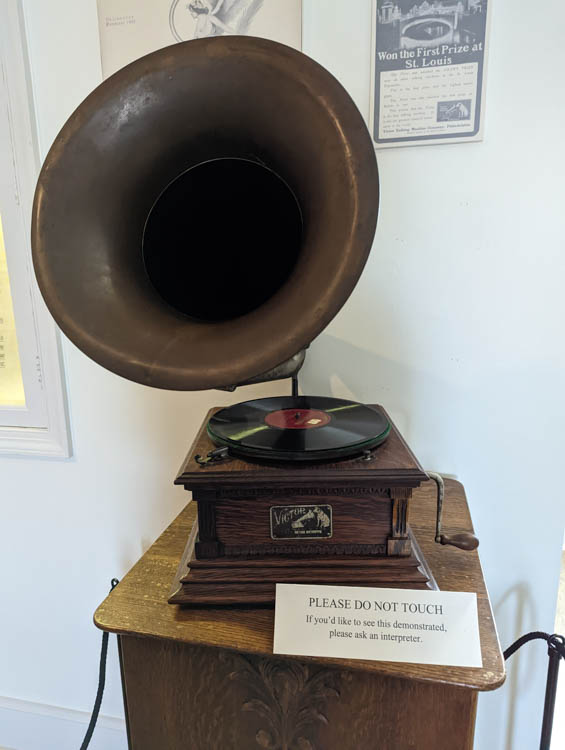
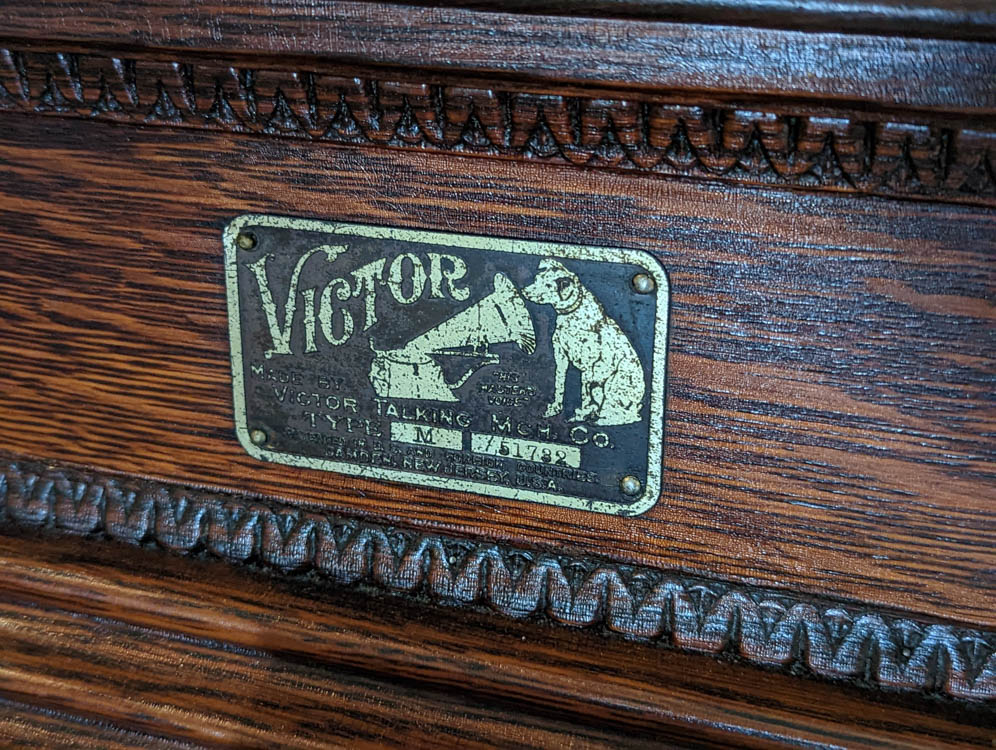
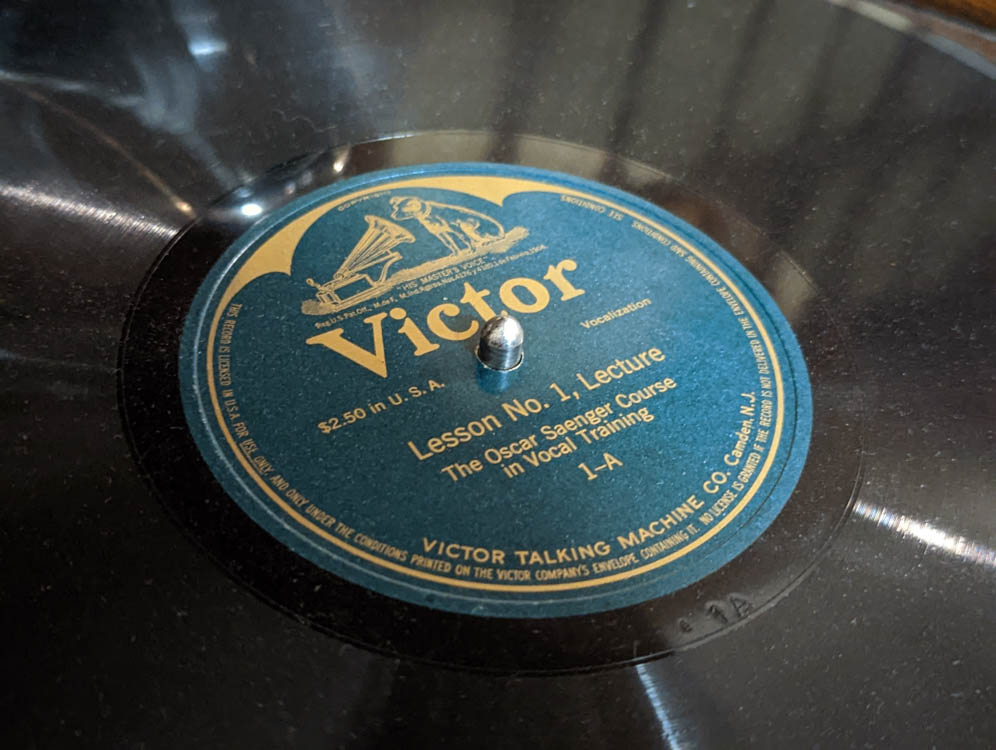
Let me spill a little tea for you about the origins of the Victrola:
Edison creates the phonograph and people are like “hey, you could totally use this to record music!” Edison eschews this idea being the practical and serious minded man he was.
Berliner takes the phonograph and improves it by adding a reproducer or sound box making it now a gramophone.
Johnson improves the gramophone by making it spring loaded, with no need for electricity or a battery, and then goes on to add a governor to it so the music plays at the same speed consistently as the spring uncoils and thus was born the Victrola.
Well, Edison sees all this and sues Berliner and Johnson who were basically splitting the world (and money!) from the gramophone and its Johnson improvements – Berliner in Europe and Johnson in the US. They couldn’t call it a gramophone in the US, but they could in the UK. Since they were the victor in most of their court cases with Edison, they called it “The Victrola” in the US. (Take that Thomas Edison – need some ointment for that burn!?)
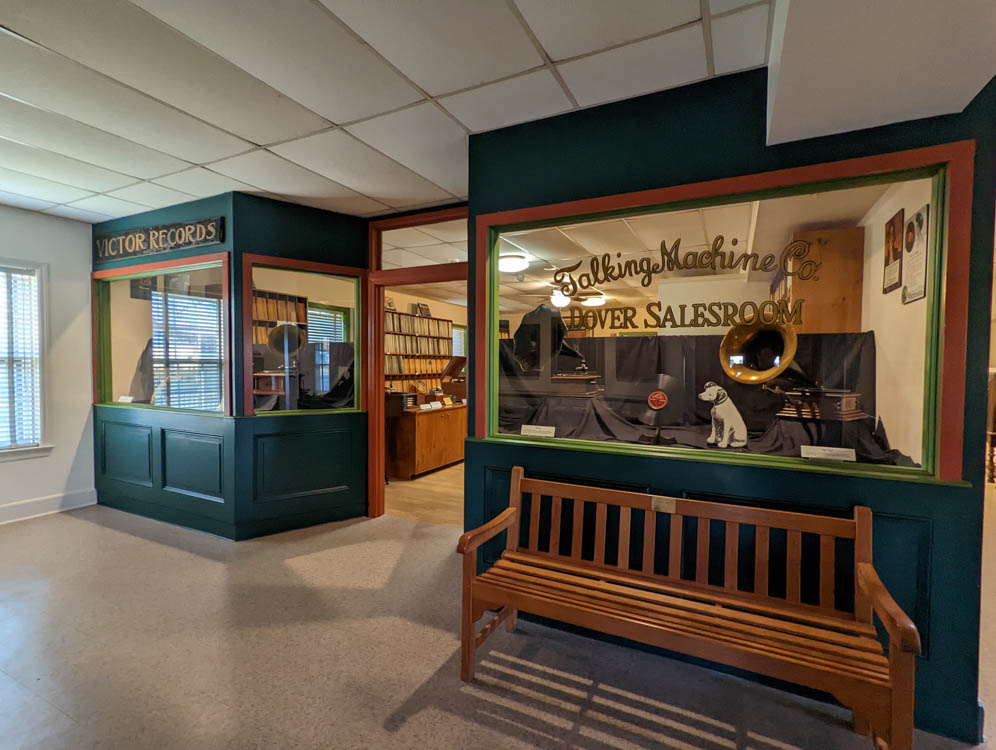
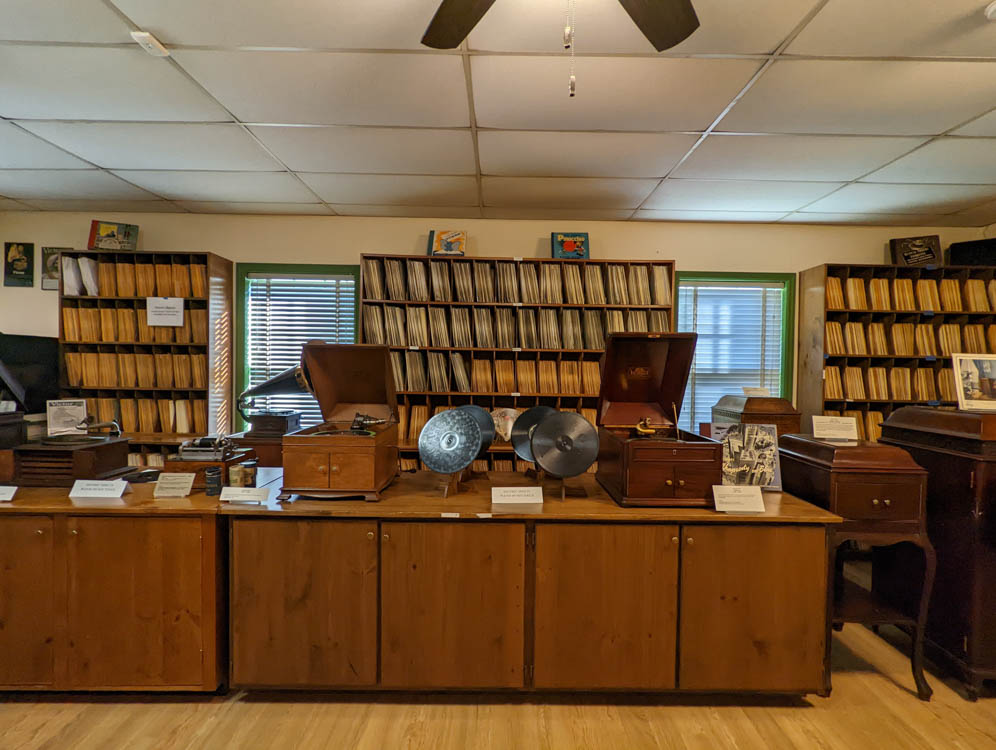
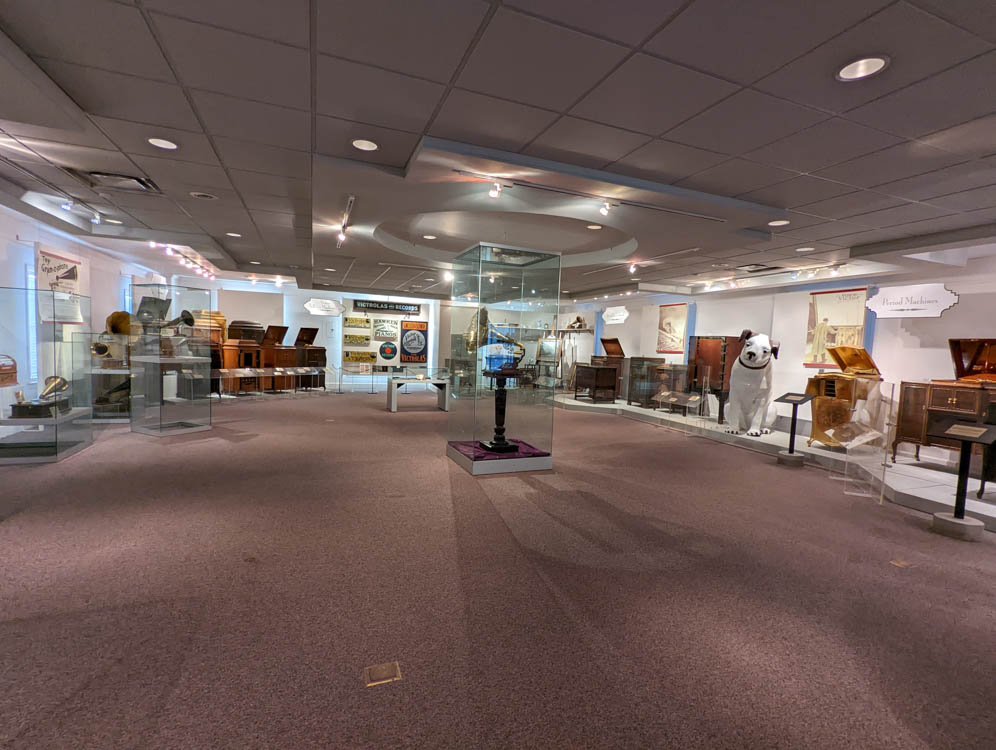
Want to know more?? You’ll just have to visit The Johnson Victrola Museum or check out The Traveling Teach in 2023.
It was now 4:45pm. I’d left at 9am and been to 4 great stops in and around Dover. It was time to head back to Stephen and Truffles (Stephen was working) – but our day wasn’t over. We went out to 1 of the 5 great pet-friendly places we visited in Lewes – Beach Time Distilling.
It was a day full of cool, new information that I had no idea about and I left feeling both energized and exhausted. Both Steves were great guides, but I do wish I’d been able to get a bit more information about the upstairs of the Old State House. A friend who went after me learned all about the manumission documents that were processed in the building which would’ve been interesting to know about. Overall, I recommend checking out historic Dover and the John Dickinson Plantation in Delaware.
Leave a Reply